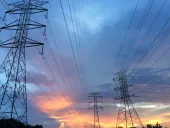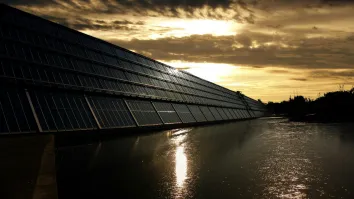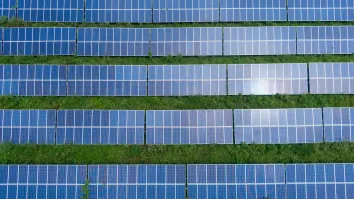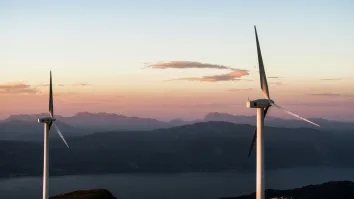
Renewable energy and the challenges for Asian power markets
By Erik Knive Several Asian countries are planning to increase the share of renewable energy sources into their generation mix. China added 18.9 GW of new wind power capacity in 2010 to a total of 44.7 GW of total installed wind power capacity, overtaking the U.S. as the country with the most installed wind energy capacity (40.2 GW in the U.S.). In April 2011, the Malaysian parliament approved a sophisticated system of feed-in tariffs aiming for 2,080 MW in renewable energy (RE) capacity by 2020, joining Thailand, Taiwan and the Philippines in their quest for cleaner energy and lesser dependence on fossil fuels.
A large proportion of renewable energy in the system, particularly wind power, will result in a relative loss in base load capacity, traditionally relying mainly on fossil fuels. More crucially, this would lead to bigger problem for grid operators, as wind energy cannot be delivered constantly or adequately to meet fluctuating demand. Although the wind speeds forecasting technology is improving, in the absence of storage capabilities, wind plants are required to shut down to compensate for the load course and relieve the grids especially when less electricity is needed and there is a lot of wind (usually at night). The development of photovoltaics has similar challenges to wind power. Electricity generation depends on solar radiation, which can vary considerably depending on the season and other short term factors such as weather changes and passing clouds. Hence, new and large electrical storage possibilities are needed to compensate for fluctuating grid requirements..
A proven and economically feasible technology to manage the variable and non-dispatchable generation such as wind and solar generation is pumped storage hydro plants.
Pumped storage plants are uniquely suited to help integrate intermittent renewable sources because these plants can store electricity to balance load, and can react quickly to changing grid conditions. Interests in pumped storage projects have surged in the U.S. and Europe in recent years, due mainly to the large influx of renewable energy sources, especially wind power.
As the portfolio of these intermittent renewable electricity sources increase, grid operators become increasingly concern over grid reliability. In Europe, the share of energy consumption from renewable sources is expected to increase to 20% by 2020 from the current 11.6%. This is expected to lead to an addition of about 27 GW of pumped storage capacity to balance these variable sources of energy.
The construction of pumped storage facilities has seen long periods of ups and downs. In the 20 years up to 2010, Europe built only 15 plants with a total capacity of 5.6 GW, while 30 years passed in the U.S. without any new pumped storage projects. As of early 2011, Europe has almost 45 GW of pumped storage capacity in operation; the U.S. has about 22 GW, while Asia has about double that of the U.S. with Japan installing half the share.
Historically, the development of pumped storage facilities has a lot to do with the size of the energy industry and the generation mix. A large energy industry has a bigger need for capacity to store electricity. A higher share of more operationally flexible power plants such as gas-fired power plants (compared to conventional thermal plants) in the generation mix requires less storage capacities. Now, the appeal of pumped storage is connected to the potential it offers to help integrate intermittent renewable energy resources into the grid reliably.
Capital costs for pumped storage plants vary widely according to local conditions (the existence of a lake or existing hydro facility can significantly reduce costs) and economies of scale, however they are typically significantly more expensive than traditional hydropower or thermal plants. In face of such costs, the challenge for any storage facility is the financing. The uncertainty over the value of pumped storage is typically the lack of adequate methods for the valuation of storage. This is generally the case in many emerging economies with newly deregulating power markets.
Traditionally, the economics of pumped storage is driven by the peak to off-peak spread – the cost incurred for pumping during low off-peak prices against the revenues gained when generating during peak hours. While arbitraging the difference between peak and off-peak prices was an effective way of benefitting from inflexible thermal generation, pumped storage projects built to complement intermittent renewable resources would likely rely on less predictable price and generation fluctuations. The irony in adding significant storage could shrink those price differentials by relieving downwards pressure on off-peak prices, making it difficult to recapture construction costs.
Ancillary Services can be another significant revenue source for pumped storage facilities. Due to operational flexibility, pumped storage facilities are very capable of providing a wide range of ancillary services. As each System Operator sets their own standards for ancillary Services, product definition and market-price formation, Ancillary Services in less organized markets may not be properly valued, and can therefore make it difficult for investors to justify the high investment costs of a pumped storage facility.
Increasing the percentage of generation from renewable sources will create the need for more storage facilities, increase the requirement for ancillary services, as well as compel large investments in the strengthening of transmission grids. A national commitment to a high renewable portfolio in developing markets in Asia, requires a commitment to either 1) A deregulated power market with competitive spot market operations together with a customized co-optimized market for ancillary services, or 2) An Energy Ministry with a long term vision for a healthy and functioning power sector, and the financial backing and muscle to invest in long term solutions that include pumped storage facilities.




















 Advertise
Advertise






